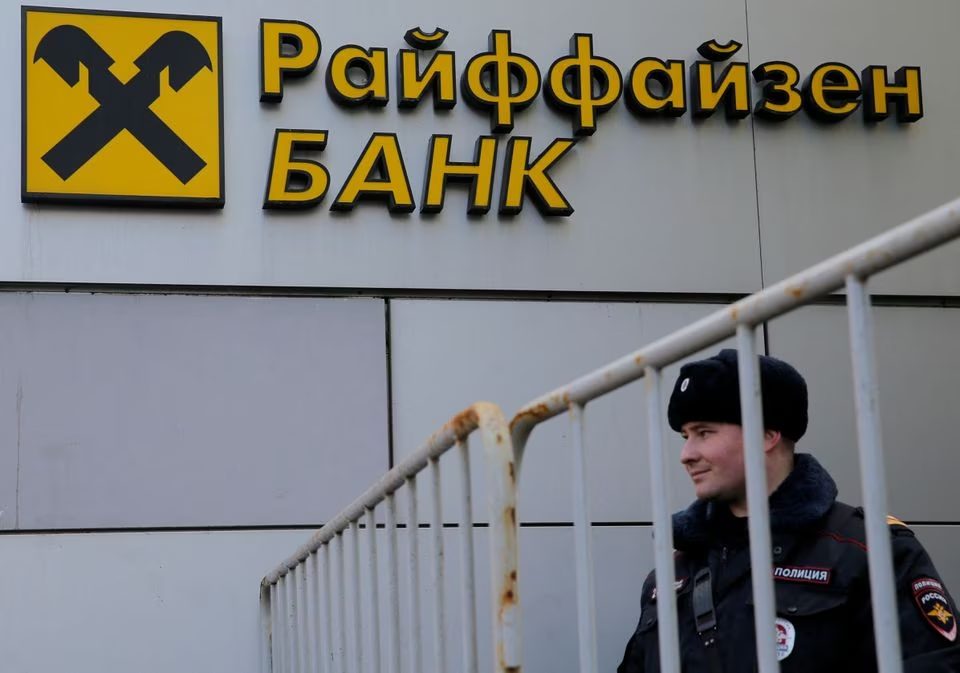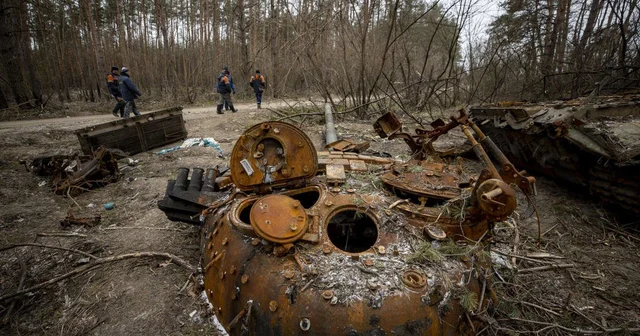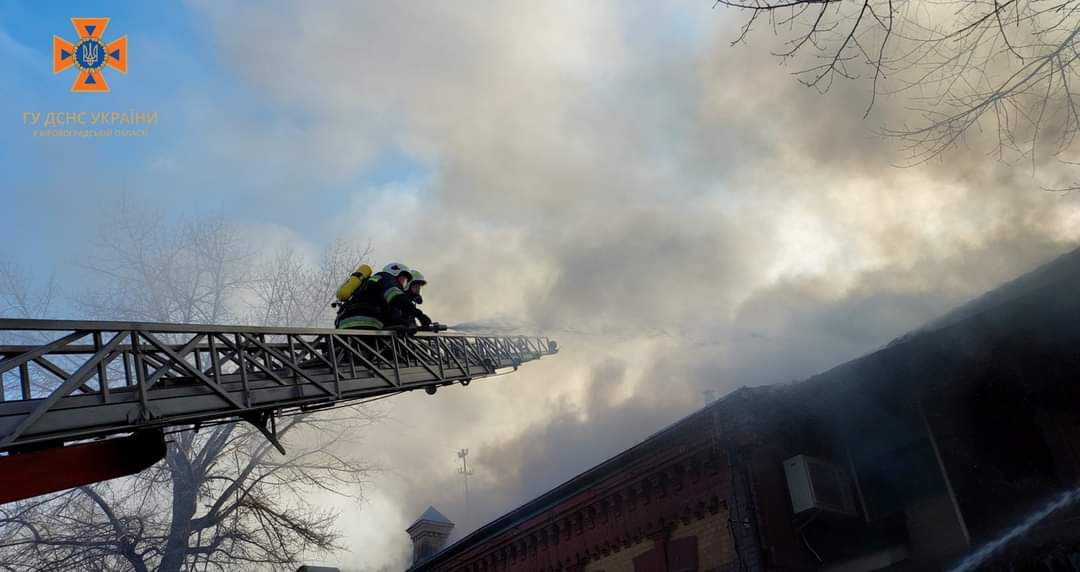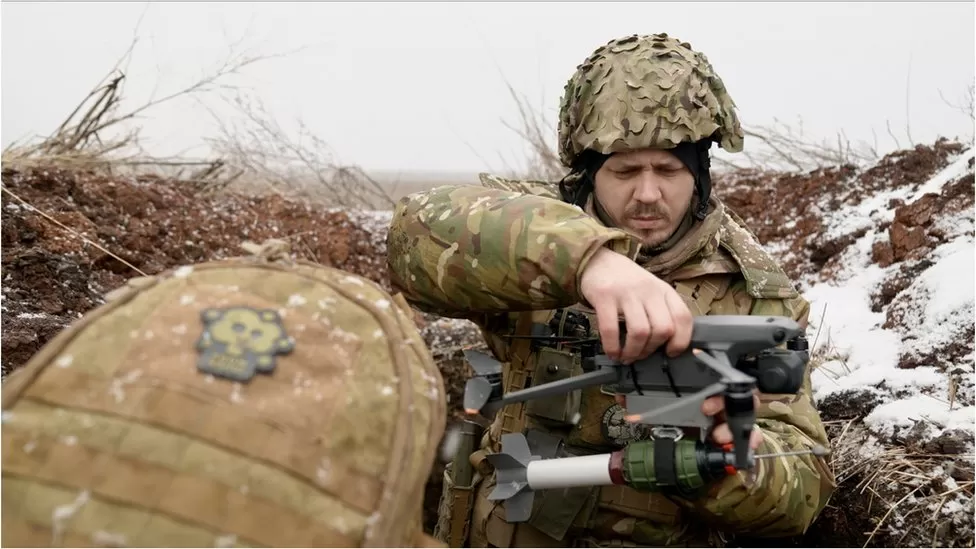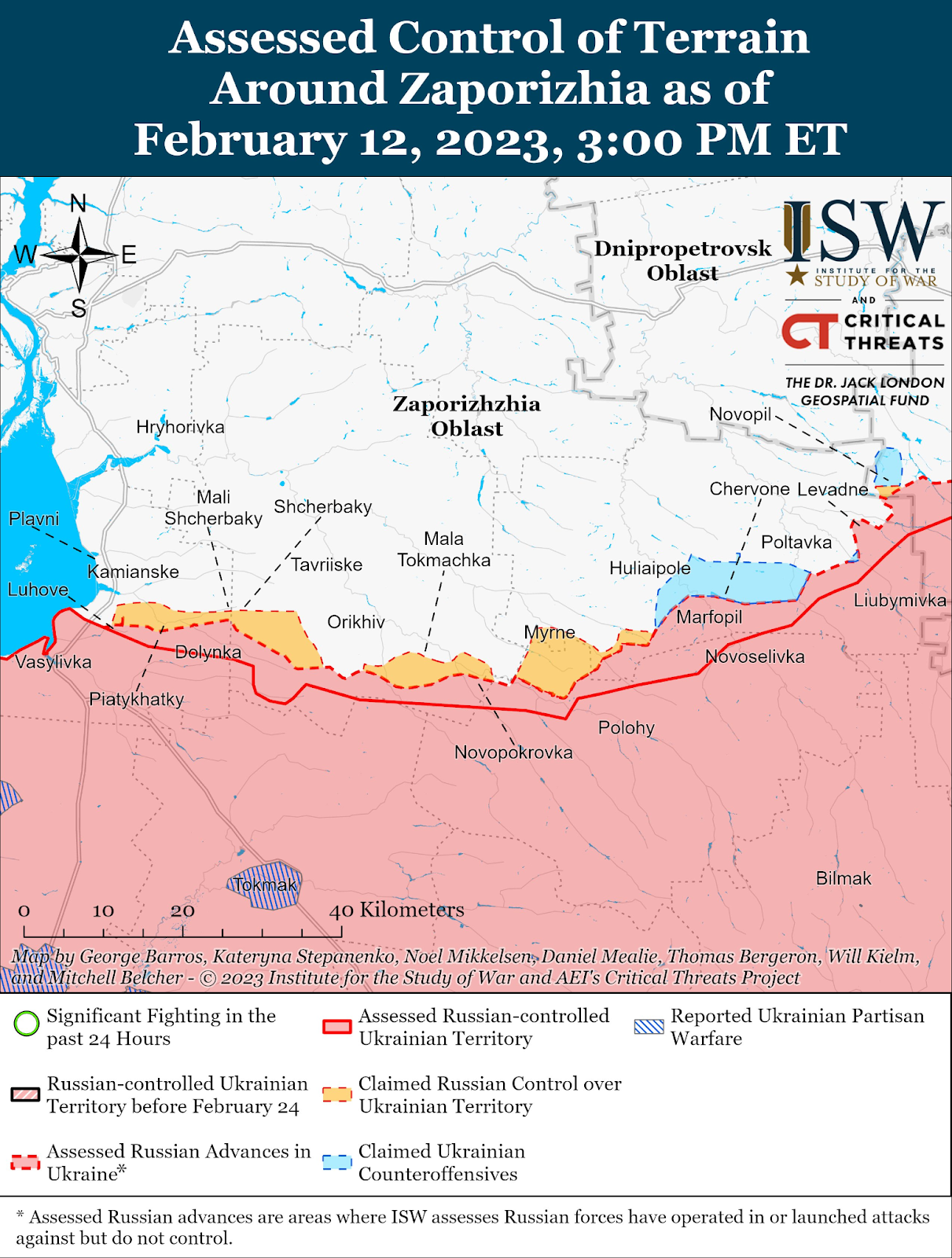Above: As Moscow prepares to offer debt postponement and forgiveness to occupational troops, Raiffeisen Bank is one of a few European banks still doing business, making profits and “supporting the Russian economy at a critical time” in Russia. Almost a year since Moscow launched its brutal war on Ukraine, Austria’s Raiffeisen and Italy’s UniCredit are the only foreign banks on the Russian central bank’s list of 13 “systemically important credit institutions”. Ukraine’s central bank has appealed to both to stop doing business in Russia.

Above: “Russia is massing tens of thousands of troops in a way that suggests it could try to swing down from the north [from Kreminna] and up from the south [from Vuhledar] in a pincer movement that encircles Ukrainian forces in the Donbas, military analysts say.” (New York Times)

Map: As part of its continued offensive operations, the enemy is amassing tens of thousands of troops just outside of Ukraine’s missile range. The US has promised longer-range rockets in its next military aid package that will drastically alter the fighting landscape in temporarily-occupied territory. (Reuters)
Possible scenario for late-winter to early-spring enemy offenses
- Ukrainian forces believe that Russia is gathering resources to build a sustained offensive to capture the administrative boundaries of Luhansk and Donetsk oblasts in March, per Kremlin orders. The enemy is carrying out dozens of small offensives across the eastern front, presumably searching for weak spots in Ukrainian defensives.
- Ukrainian officials believe that Russia does not have the resources needed to launch a large-scale offensive, but may gradually increase the intensity of on-going attacks. Outside of Bakhmut where the elite of available russian forces are now engaged, Russia is using badly degraded formations filled in with recently mobilized personnel who have been inadequately prepared to fight effectively.
- A former Ukrainian minister of defense said that he expects that if Russia were able to capture all of Donbas and hold the southern land bridge to Crimea, it would announce the completion of the special military operation and demand negotiations.
- A DNR commander questioned why Russian forces are wasting their limited resources on many small-scale grinding advances rather than accumulating combat force to launch a more concentrated larger-scale offensive.
Wagner’s losing gambit
- The leader of the Wagner mercenary group was “ambushed” in an interview set up by the Kremlin to cut off his rise in ultranationalist circles. He was called to answer by a prominent pro-Kremlin interviewer for Wagner controversies such as high casualties and ineffectiveness of recruited convicts, execution of deserters, treatment of recruited forces as cannon fodder, harsh criticism of the Russian Ministry of Defense, his political aspirations, and Wagner mercenaries bearing “symbols of the Third Reich” despite fighting to “denazify” Ukraine.
- A Wagner-affiliated milblogger published a purported official document that outlines rules for covering the war in Ukraine with explicit requirements to refrain from mentioning Wagner or its leader in the media.
- Analysts note that Wager’s trajectory looks similar to that of Igor Girkin, a hero of the 2014 invasion who is now sidelined as “an embittered critic of the Kremlin and the Russian military command”, seeking to “rehabilitate his reputation in extremist Russian nationalist circles”.
General Staff’s Daily Video Digest with English subtitles
Above: MSN
Video: Good morning from the General Staff. Drone operators from the Ukrainian Marines add to enemy losses.
Доброго ранку, Україно!
Відео вдалої бойової роботи операторів БПЛА бригади морської піхоти імені контр-адмірала Михайла Остроградського по ворожій техніці та її живій силі.#морська_піхота #вірні_завжди #stoprussia pic.twitter.com/qZ5fVq1Swb— Генеральний штаб ЗСУ (@GeneralStaffUA) February 13, 2023
Ukrainian General Staff of the Armed Forces estimated enemy losses since February 24, 2022 (with daily additions)
- Liquidated personnel, 138,340 (+560)
- Tanks, 3,283 (+3)
- Armored personnel vehicles, 6,492 (+4)
- Artillery systems/MLRS, 2,290/465 (+3/0)
- Anti-aircraft warfare systems, 234 (0)
- Aircraft/helicopters, 296/286 (0)
- UAV operational-tactical level, 2007 (0)
- Cruise missiles, 857 (0)
- Warships/boats, 18 (0)
- Vehicles and fuel tanks, 5,150 (+2)
- Special equipment, 217 (+2)
Above: Ukrainian State Emergency Service
Glory to Ukraine! Day 355 of the full-scale russian military aggression has begun.
- Over the past 24 hours, units of the Defense Forces of Ukraine have repelled the attacks of the occupiers in the areas of Hryanikyvka settlements of the Kharkiv Oblast; Kreminna and Bilogorivka in Luhansk Oblast; Viymka, Fedorivka, Vasyukivka, Bakhmut, Ivanivske and Klishchiivka in the Donetsk Oblast and Zaliznychne in Zaporizhzhia.
- At the same time, the enemy launched 4 missile strikes and fired 85 shots from MLRS.
- The threat of further russian air and missile strikes on the entire territory of Ukraine remains high.
- Areas of 18 settlements were hit by the enemy shelling. Among them are Tovstodubov, Bachivsk, Basivka and Popivka in Sumy Oblast and Krasne, Hlyboke, Vovchansk, Figolivka, Novomlynsk and Dvorichna in Kharkiv
- Kupyansk and Lyman axes: the enemy carried out mortar and artillery shelling of 22 districts of populated areas. In particular, these are Kislivka, Kotlyarivka, Pishchane and Berestove in the Kharkiv Oblast and Novoselivske, Makiivka, Nevske, Dibrova and Bilogorivka in the Luhansk
- Bakhmut axis: from tanks, mortars, and artillery were shelled, in particular, Spirne, Vasyukivka, Ivano-Daryivka, Paraskoviivka, Zaliznianske, Chasiv Yar, Bakhmut, Stupochki, and Klishchiivka. In total, there are 16 settlements.
- Avdiivka and Novopavlivka axes: areas of 25 settlements, including Tonenky, Avdiivka, Pervomaisky, Zolota Niva, Nevelsky, Krasnohorivka, Marinka, Prechistivka, and Bogoyavlenka of the Donetsk Oblast, were under tank, mortar, and artillery shelling.
- Zaporozhzhia axis: Vremivka and Novopil in Donetsk Oblast were affected by fire; Gulyaipole, Stepove, Olhivske, Novodanilivka, Novoandriivka, Mala Tokmachka, Stepnohirsk and Charivne in the Zaporizhzhia Oblast and Nikopol in the Dnipropetrovsk
- Kherson axis: Kherson was affected by enemy artillery fire, as well as the districts of 20 settlements, in particular, Mylove, Zmiivka, Respublikanets, Novokairy, Vesele, Mykilske, Antonivka, and Dniprovske of the Kherson Oblast.
Believe in the Armed Forces! Together we will win! Glory to Ukraine!
Above: The Ukrainian Patrol Police take responsibility for protecting the welfare of civilians in the combat zone.
 Map via ISW
Map via ISW- Russian offensive operations along the Svatove-Kreminna line have resulted in marginal advances without operational significance thus far.
- Russian forces continued offensive operations in the Kreminna area where they are strengthening their grouping of forces.
- Ukrainian partisans destroyed an automated railway control station near Shchastia, Luhansk, on a section of the railway connection between Shchastia and Starobilsk. This attack may impede Russian forces’ ability to transfer forces, equipment, and supplies within rear areas of Russian-occupied Luhansk Oblast.
Above: While Ukrainian forces still hold most of Bakhmut, the hours must be measured on the balance between invader and defender losses. The taking of Bakhmut is Putin’s single most important goal for the February 24 anniversary. BBC news journalists reported on the ground over the weekend.
 Map via ISW
Map via ISW- Russian forces continue to prioritize offensive operations in Donetsk Oblast. Ukrainian Commander in Chief General Zaluzhnyi told US Joint Chief of Staff Chairman General Milley that Russian forces conduct up to 50 attacks daily from the direction of Donetsk City and conduct constant attacks around Bakhmut. General Zaluzhnyi stated that fierce fighting continues around Vuhledar and Marinka and that Ukrainian forces have managed to regain previously lost positions in Donetsk Oblast. General Zalzuhnyi emphasized that this is largely a battle of artillery requiring both weapons and ammunition for success.
- The Russian military is deploying its most elite units to the Bakhmut area in smaller formations using urban infiltration tactics, seemingly resulting in significant tactical Russian advances in the Bakhmut area that could lead to operational gains if Ukrainian forces choose to withdraw from Bakhmut.
- Russian forces’ reported culmination and tactical failures around Vuhledar, Donetsk, have likely further weakened the Russian ultranationalist community’s belief that Russian forces are able to launch a decisive offensive operation. Russian forces failed to quickly advance in the first days of their offensive to capture Vuhledar, losing the initiative by the end of January due to Ukrainian forces’ rapid transfer of reserves to the area.
- Enemy milbloggers fear that the Russian offensive to capture Vuhledar has likely culminated and referenced viral footage showing Ukrainian forces destroying a disorderly column of Russian mechanized forces in the Vuhledar area.
- Due to the low level of provision of winter uniforms, since January of this year, the number of servicemen of the Russian occupation forces with signs of frostbite has increased significantly. Thus, in the medical facilities of Horlivka, Donetsk, the number of military patients being treated for frostbite is up 30 percent of all wounded.
Above: Maxar Technologies image from early January shows the open sluice gates on Kakhovka Reservoir. Water levels in the reservoir are now the lowest in three decades. (NPR)
- NPR reported that Russian forces deliberately opened the sluice gates of the Kakhovka Reservoir immediately after they blew the dam bridge during the withdrawal from west (right) bank Kherson Oblast on November 11. Recent satellite data show that “the water level at the reservoir has plummeted to its lowest point in three decades.”
- At stake is drinking water for hundreds of thousands of residents, irrigation for nearly half-a-million acres of farmland and the cooling system at the Zaporizhzhia Nuclear Power Plant. Metropolitan areas that rely on water from the reservoir include Enerhodar, Melitopol and Berdyansk. The Zaporizhia Oblast Military Administration reported the security of the Zaporizhzhia Nuclear Power Plant will be threatened if the reservoir’s water level falls below 13.2 meters due to the plant’s reliance on the reservoir for its cooling system.
- The Ukrainian government is calling it deliberate ecocide. A deputy prime minister commented that “It just seems strange that they’d be carrying out a scorched-earth policy on territory that they claim publicly that they want to keep.”

